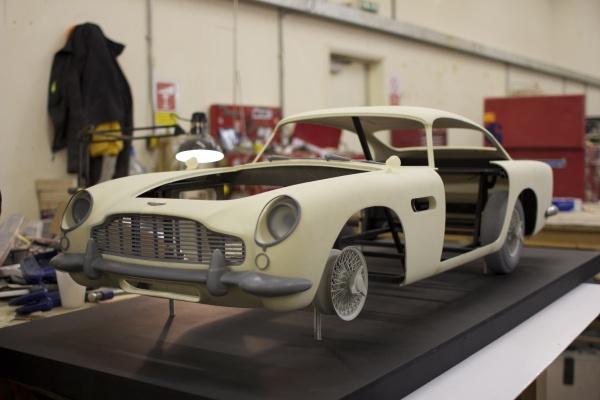
Comparison test: Ford Fiesta ST, Peugeot 208 GTi, Renault Clio RS
Comparing the most powerful, sportiest and, of course, the most expensive examples of such widespread superminis as the Fiesta, 208 and Clio is a fascinating exercise. The most important differences are noticeable while driving. The look of all three proves that the marketers of the three revered brands presented their most folded "supermodels" quite differently. The Fords relied most on content and, apart from a few small things, the usual accessories for a nobler sporty look, they didn't need bigger and wider wheels, of course with lightweight rims, a slightly lowered chassis, a special but unobtrusive color. , changed the mask and the lower part. rear bumper, rear spoiler and ST lettering.
Slightly more different than the base production Clio, Renault's RS received a flashy yellow color, black lacquered lightweight wheels, the largest spoiler of all three and a beautiful addition under the rear bumper, made as a special aerodynamic accessory. on the wheels of course lower on the body. However, there was probably a group of enthusiasts at Peugeot who couldn't handle the last few years without their GTi. With a slightly lowered chassis, slightly modified front and rear, and a rear spoiler, the 208 received only a very bright red sheen and lots of GTi badge stickers. They couldn't help but even posted a caption: The GTi is back! We understand them, but it still seems like they should have welcomed an inferiority complex because previous Peugeot execs have "killed" the young and wild icon that the near-legendary 205 GTi has been for years.
When we pitted them against each other on "our" circle in Raceland near Krško, we already had some experience with them. We got there (with the general limitation of everyday life on the highway) and along the way found that for a normal trip, the difference between what we were supplied from the construction departments, and that we have to look for the right one in accordance with what each customer personally represents. comfort. When it comes to fashion and electronic accessories, the travel company is doing the worst. The small infotainment screen (more information on radio and accessories) was completely satisfying, but compared to what the French have to offer in this area. Of course, you should immediately check out the price list, which is the final judge of how much fun we have to drive, and whether we also think about a navigation device or even an interesting Renault internet connection. In any case, it is also commendable that all three have a mobile phone connection and that the procedure is childishly simple.
To find out how much effort the designers of all three brands have put into making their products match what the general public envisions as an ST, GTi or RS, it’s impossible to get a race track experience. It is true that there is never normal traffic there, but this is by far the easiest place to get confirmation of our chassis impressions and true engine, transmission and chassis compatibility.
The outcome was clear: Ford cared the best about fast and sporty driving. The basis is a precise steering, it handles exactly what we wanted from the car, corner entry was easy, the chassis provided a stable and controlled position, and the engine, despite minimal power and in combination with a perfectly matched transmission, significantly influenced the behavior of the Fiesta on racing tests. Both Frenchmen followed the Fiesta at a very short distance with incredible evenness in their backlogs.
Slightly less precise steering (Renault) and slightly more instability in the transfer of engine power to the road (Peugeot) testify to the poor performance of the design departments of both countries in providing the most suitable chassis. The Clio also stood out on the "lap" because of the gearbox. The superior dual-clutch transmission is designed for versions where comfort is the most important part, and its sportiness couldn't be improved by gearbox specialists - simply put, the transmission is too slow for a car that sounds like an extra RS badge (or Renault will have to remember to erase everything). about the history of Renault Sport so far!).
However, when we compare these three for use on normal roads, the differences are simplified. With all three long-distance rides as fun as city driving, and on winding roads, all three are reliable and fun - and that's where the Fiesta excels a bit, too.
Luckily, with all three, their extra "racing" features don't compromise comfort in any way (which is to be expected given the chassis and the big, wide wheels). Renault may gain some advantage over both competitors in terms of comfort - because it has an extra pair of doors and an automatic transmission. Of the three, it's also the only choice for more family shoppers.
Then there are two more points that can be combined into a common one - the cost of use. Here the most important are the cost of purchase and fuel consumption. The numbers speak for the Fiesta, but our test car was equipped with a bare minimum of accessories that can also enrich life in the car.
So, our first choice is the Fiesta, with Renault coming in second with the aforementioned comfort and slightly more convincing performance. Peugeot, however, cannot be said to be the last, only in sum it is the least convincing. Otherwise one could judge if this comparison was just a beauty contest...

Face to face
Sebastian Plevnyak
I started the triathlon with a slight lead as I drove to Raceland in Krško in a Ford Fiesta ST, which immediately set high standards. Too high? Of course, for both participants, especially in terms of sportiness and pleasure that it delivers. Also at the test site, the Fiesta showed itself the best, only on the way back it was a little different. The Peugeot 208 is great for a normal, quiet ride too, but doesn't deserve the GTi acronym. The Clio deserves more, but the RS acronym should grace a thoroughbred racing car. In practice, the Clio does not convince (the automatic transmission does not correspond to the sporty character of the car), but even more theoretically, which is also the reason for its popularity among Slovenian buyers or followers.
Dusan Lukic
When I thought about my order right after the end of our test lap and on the race track, it became quite clear to me that the Fiesta ST is by far the best car. The combination of chassis, engine, transmission, steering wheel position, steering, sound... Here the Fiesta is two steps ahead of its competitors.
However, the Clio and the 208 ... I put the 208 in second place on the first point, mainly because of the minor flaws in the Cil and because the GTi's chassis is excellent. But longer reflections changed the order of things. And looking at the price list changed the situation again. However, the 208th (according to the official price list) is about one and a half thousand cheaper than the Clio. The Fiesta is, of course, two thousandths cheaper. Do you know how much tires, gasoline, and track rental fees you get for this money?
Tomaž Porekar
For me, the first place in the Fiesta is not surprising. Ford knows that designers have an edge when designing cars, and marketers only need to properly wrap up the package of what they offer at Ford. On the contrary, the power of model design seems to be recognized in both French brands. With the design of this Clio, Renault has significantly devalued the prestigious RS acronym, but Peugeot hasn't taken enough time to really explore in depth what interesting models they've had in the past. Good proof of this is the accessory they even want a fat premium for, but we all think it's completely unnecessary: the GTi decals they exaggerate, which showcases the mentality of those who have forgotten what an icon the 205 GTi was. ...
